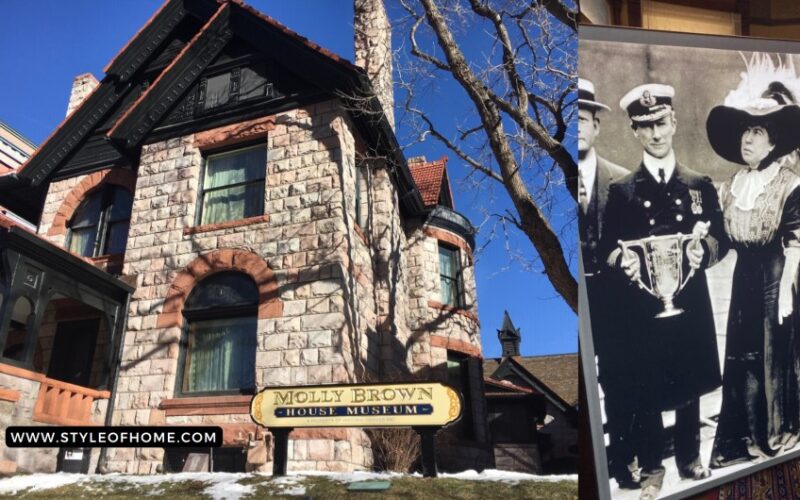Molly Brown House in Denver, Colorado, has now become a museum that shows Denver’s history and legacy. This historic home belonged to Margaret Brown, a brave and kind woman who survived the sinking of the Titanic and helped others survive. Today, we’ll explore the rich history of Molly Brown’s house by exploring its stunning features, design, and views.
Molly Brown House Details
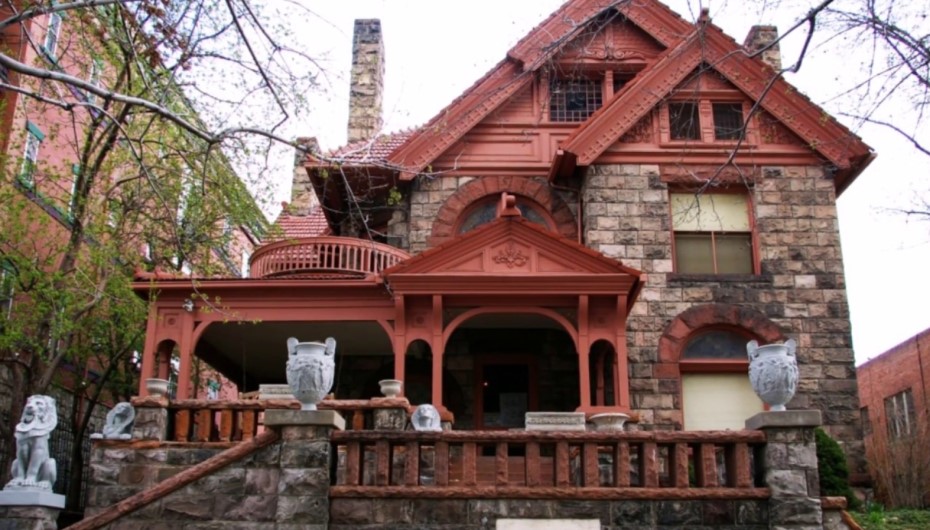
Address: 1340 Pennsylvania St. Denver, CO 80203, United States
Style: Queen Anne and Richardsonian Romanesque styles
Area: 1,328 Square feet
Price: $6,000
Molly Brown’s home has been the residence of many people for over 100 years. This protected Denver landmark is among the preserving historic homes. It has been on the National Historic Places list since 1972. This house was turned into a museum in 1971. Molly Brown Museum showcases Margaret’s amazing life as well as life in Denver during the 1800s.
Molly Brown’s House, also known as the Molly Brown Museum is located near Downtown Denver which is near Union Station and Cherry Creek North. The house features two bedrooms, two bathrooms, an indoor gourmet kitchen, a living and dining room, a library, multiple firepits, a private parking garage, a fitness center, and a yoga studio. There’s also a rooftop pool with city views and multiple storage spaces. The outdoor area features plush gardens, an outdoor kitchen, and a sitting area.
Rich History Behind Molly Brown House
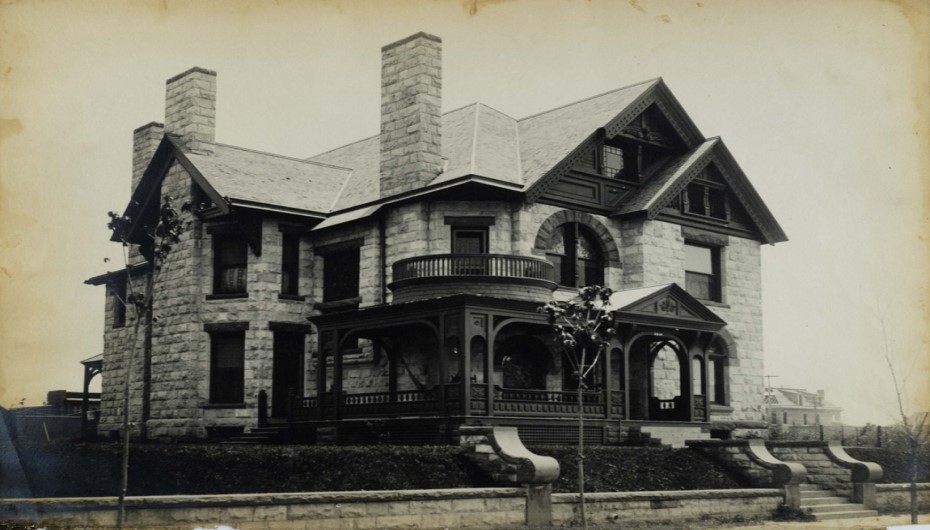
The Molly Brown Home was built in 1889 by architect William A. Lang. It featured a blend of Queen Anne and Richardsonian Romanesque styles. The house of Molly Brown was initially owned by Isaac and Mary Large. In 1894, the Large family sold the house after a law change affected the silver industry.
In 1894, James Joseph Brown, Margaret’s husband purchased it for $30,000 from Isaac and Mary Large. However, Margaret took ownership in 1898. Due to frequent travel, the Browns often rented out the house, notably to the Governor of Colorado in 1902. Margaret converted it into a boarding house in 1926. After her passing in 1932, the house sold for $6,000 and was repurposed as a rooming house, community center, and rental apartments.
Demolishing & Upgradation of Molly Brown Museum
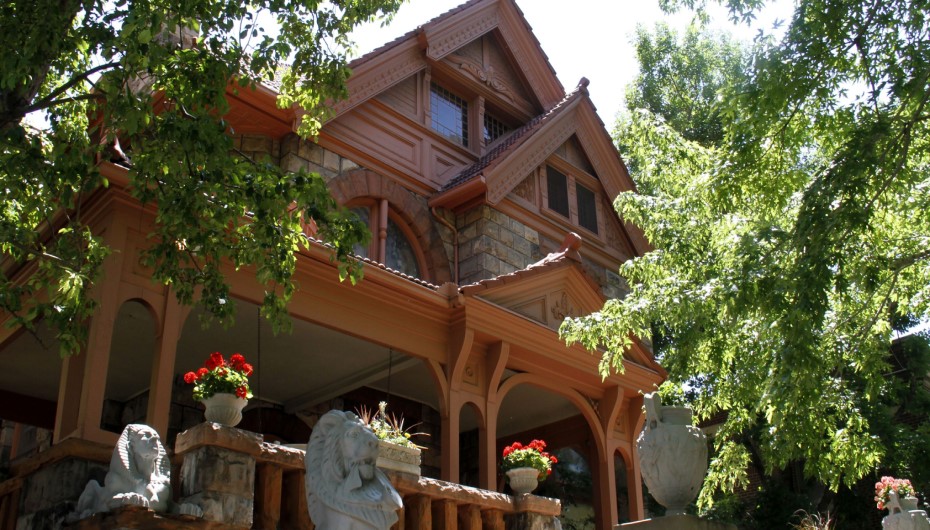
The house of Molly Brown after her death was used for multiple purposes till the 1960s. No one took care of this house and as a result, its residents thought about demolishing the house. The Molly Brown House was nearly demolished in 1970, but Historic Denver, Inc. intervened. The company started to raise funds for its restoration.
The company focused on the original state of this house and invested a lot in collecting 1910 photographs, architectural research, paint analysis, and other features inside Molly Brown’s home. They successfully returned the house to its original state in 1971.
Now Molly Brown’s museum is owned by Historic Denver. They also offer daily public tours. A special sign outside the Molly Brown House celebrates Margaret’s fight for women’s right to vote. The sign was briefly stolen in 2023, but thankfully, it was found and returned to its place.
Architectural Features of Molly Brown’s House
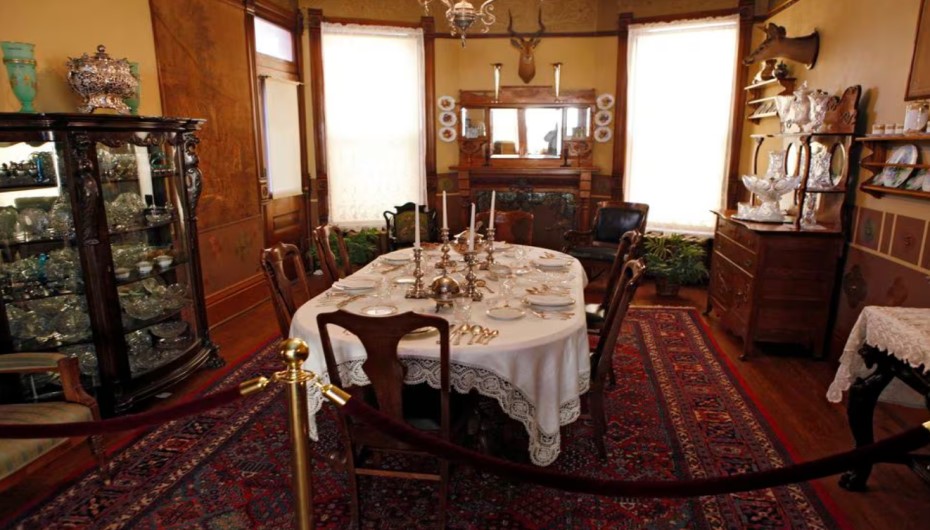
The Molly Brown Home is a historic treasure showcasing a unique blend of architectural styles. The exterior features a striking red sandstone façade, complemented by intricate woodwork and ornate details. Turrets and gables on the roof reflect the Queen Anne style, while semi-circular arched windows add a touch of Romanesque Revival flair.
The Molly Brown House was restored in the 1970s to its original grandeur. Careful research preserved its historic accuracy, and original materials were kept whenever possible. The interior of the house features a majestic grand staircase offering exquisite woodwork. Elaborate plaster ceilings, vibrant stained glass windows, and authentic Victorian-era furnishings are also featured inside. You’ll also see some notable architectural features including Richardsonian Romanesque arches, Queen Anne bay windows, and a spacious wrap-around porch.
Virtual Tour Inside Molly Brown Museum
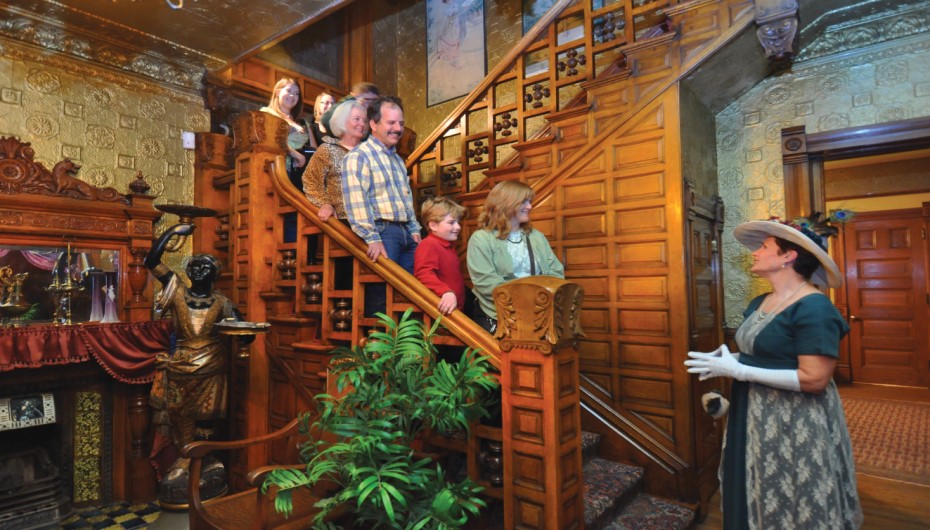
As we step inside the Molly Brown Home, a grand staircase curving upward in the elegant foyer welcomes us. The living room and dining room are beautifully decorated. The living room has comfy seats, pretty stained glass windows, and classic furniture. The dining room has a fancy chandelier, a big table, and a nice cabinet. The stained glass doors connect to the porch. The adjacent kitchen features vintage appliances, classic cabinetry, an original sink, and a cozy breakfast nook.
The library features floor-to-ceiling bookshelves, comfortable reading areas, rich wood paneling, and historic artifacts. Throughout the Brown’s house, you’ll see modern wood cabinets, granite countertops, stainless steel appliances, and a customizable closet. The grand staircase then leads us to the upper floors, where spacious bedrooms with period furnishings, vintage bathrooms, and Molly Brown’s personal artifacts are present.
Inside, special exhibits tell the story of Molly Brown’s amazing life. You’ll see many different things including her Titanic days, her fight for women’s rights, and her personal letters. The outside area including the cozy porch is the perfect place to relax in comfort. The beautiful gardens and old carriage house take you back in time.
The 1900s Era of Molly Brown House
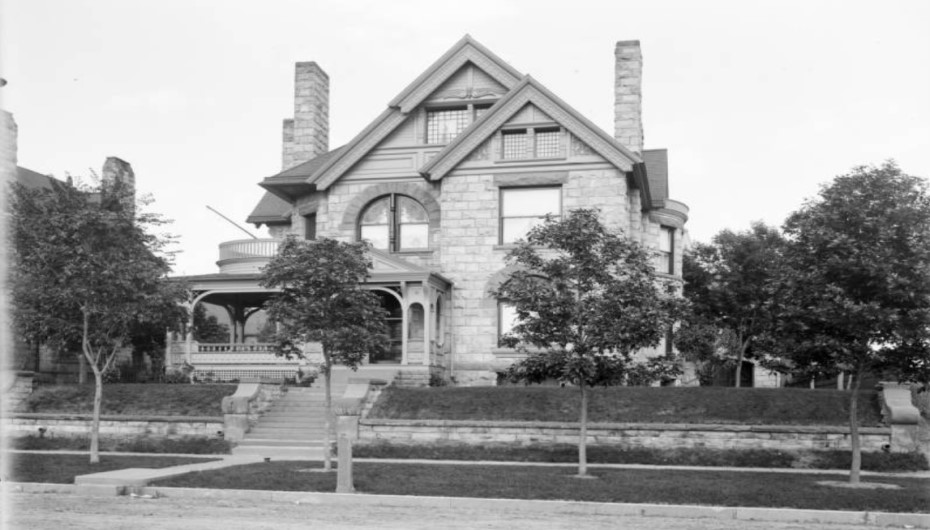
Molly Brown’s bravery, kindness, and determination made her a beloved figure in Colorado. This house is a special landmark that tells her journey including from a poor, illiterate girl to a wealthy woman, her travels and education, her attempts to fit into Denver society, and her charitable work. Her home hosted royalty and many international guests.
A Little About Molly Brown’s Life
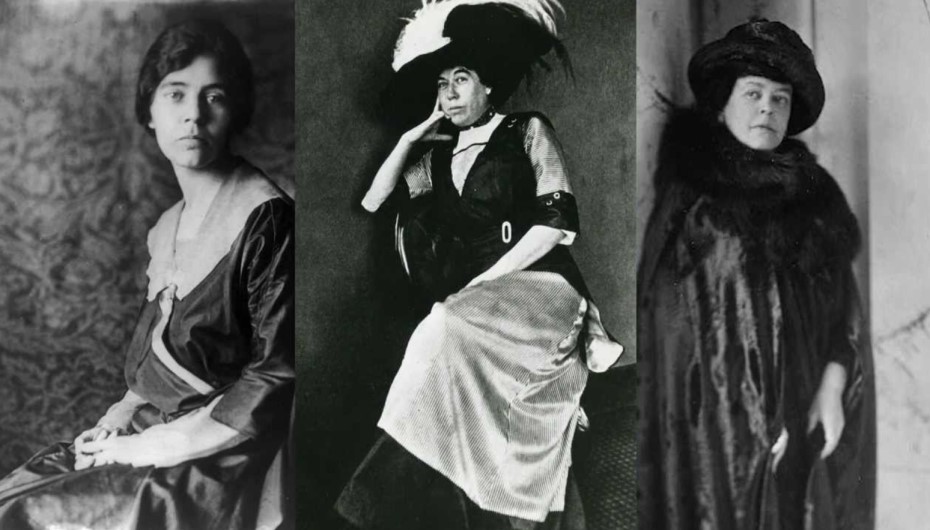
Molly Brown was born Margaret Tobin in 1867 in Hannibal, Missouri, the same town where Mark Twain grew up. Her parents were Irish immigrants. At 15, Molly moved to Leadville, Colorado with her brothers. She married James “Johnny” Brown, a miner twice her age. James became a millionaire through hard work and finding valuable minerals. His most famous discovery was the Little Johnny Mine.
In 1894, the Browns bought this house in Denver at 1340 Pennsylvania Street. Molly decorated it lavishly, hoping to join Denver’s high society. However, she was snubbed by the city’s elite. She then traveled the world, studying art, music, and languages in cities like Paris, London, and New York. Molly Brown’s travels made her famous worldwide. They had two children, Franklin and Kathy, and separated in 1909.
The Main Reason Behind The Fame of Molly Brown
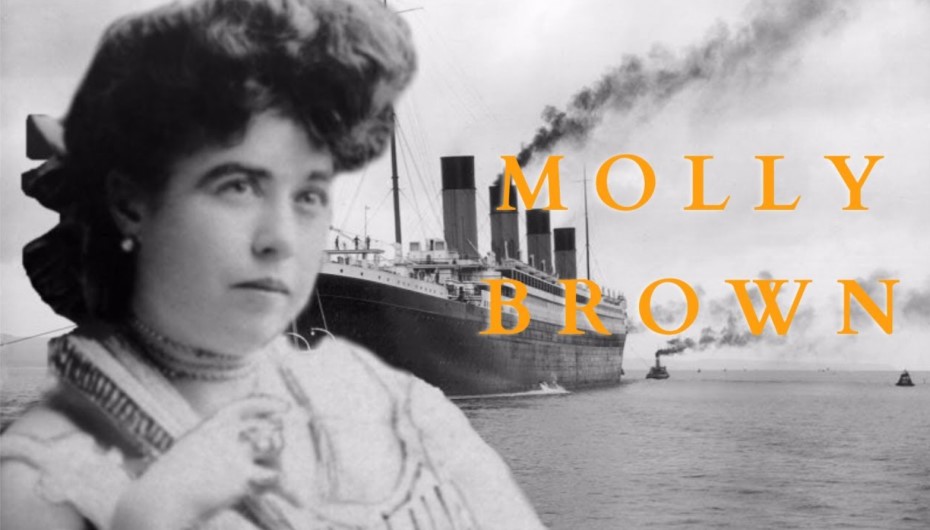
She helped many people through her charities. Her struggles include hospital work during World War I, entertaining troops, building the Mark Twain Memorial in Hannibal, Missouri, and preserving Denver poet Eugene Field’s home. Her greatest fame came from surviving the Titanic disaster on April 15, 1912.
When the ship sank, Molly helped people board lifeboat No. 6, kept survivors calm with humor and song, and led the lifeboat crew. After being rescued, Molly said, “I’m unsinkable,” earning her famous nickname. Molly supported women’s rights and was a leader in the women’s movement. She also helped workers’ families after the Ludlow Massacre in 1914
Molly’s life was remarkable. Even a movie and musical told her story, including the 1997 film Titanic starring Kathy Bates. Her husband James J. Brown died in 1922, and Molly Brown died in 1932 at age 63. They are buried together in Long Island.
Molly Brown House After Her Death
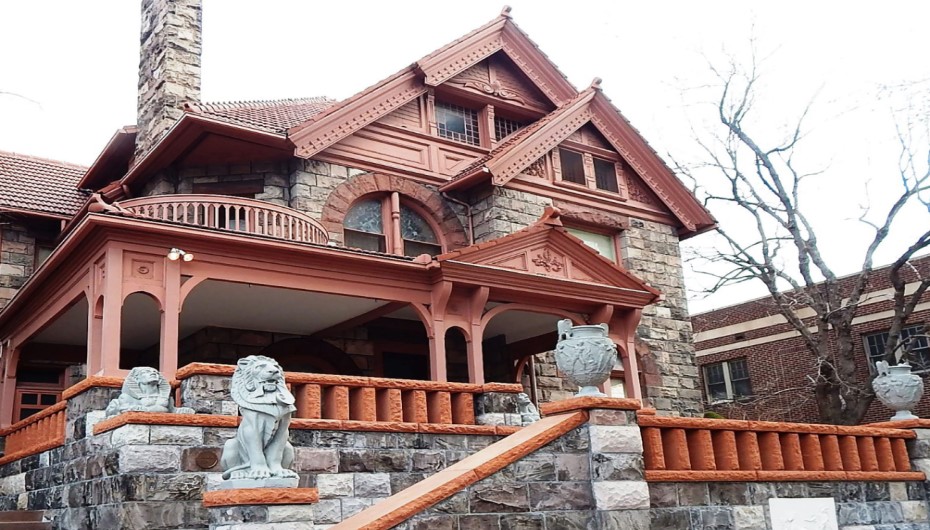
Molly wanted to turn her Denver home into an art museum, but her children didn’t agree. Today, the Molly Brown House is a museum showcasing her life and achievements. This 2.5-story house originally featured a basement, bedrooms, bathrooms, dining hall, sitting room, sun room, parlors, stone walls with wooden decorations, entry hall, kitchen, and a carriage house with a cupola. Now, the Molly Brown Museum honors her legacy and sparked citywide preservation efforts.
Molly Brown’s Museum Tour Details
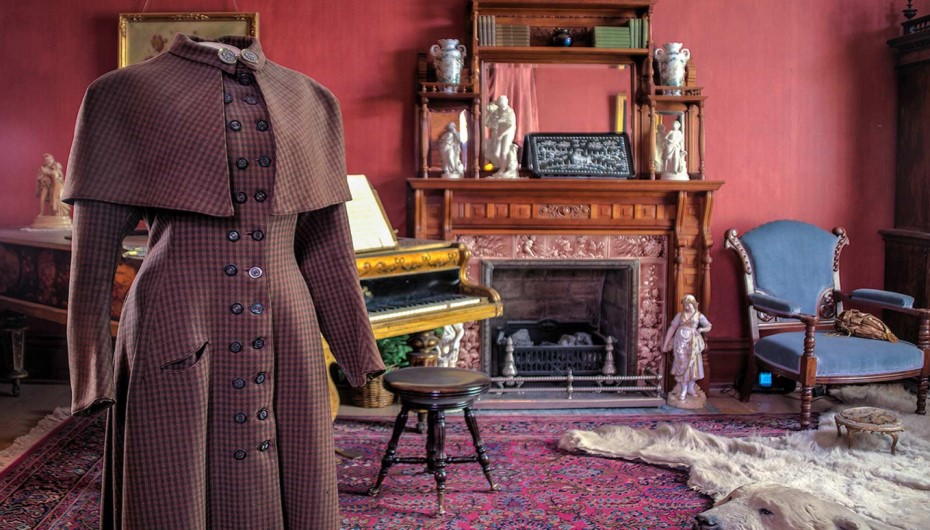
You can plan guided tours of the house, exhibits, and gardens. However, self-guided tours are not permitted. Remember that, non-flash photography is permitted for personal use. Inside, you’ll see many of her personal artifacts are on display. You can also plan for school and group tours.
Tuesday to Sunday: 10:00 AM – 04:30 PM
Mondays are closed.
Below are the admission costs for Molly Brown’s Museum.
Adults (age 19-69) $22, Seniors (70 and up)/Military/Teachers/College Students $20, Junior (age 6-18) $18, free for children under 5.
Molly Brown House Vs Other Celebs Houses

Molly Brown’s house featured all the useful and desired amenities inside when the house was built just like the houses of current famous stars like Eminem house in Michigan and Rick Ross house on Miami Beach. Molly’s house offers beautiful landscape views from the upper levels just like Morgan Wallen House in Nashville and Tyreek Hill House in Florida.
Molly Brown home has turned into a museum now just like Selena Quintanilla house and has become famous just like Breaking Bad’s Walter White House. The architecture and house design feature natural materials, marble countertops, and hardwood floors just like Andrew Tate’s home in Romania.
Frequently Asked Questions (FAQs)
What Happened at The Molly Brown Home?
Molly Brown’s husband died in 1922. She lived in their home until she died in 1932. Later, the home was saved and restored. It became a historic landmark in 1971.
Why is The Molly Brown House Important?
It remembers Molly Brown, a brave and influential woman who survived the Titanic disaster, made a difference in Denver and the US, and inspired others through her courage and kindness.
Who Was Molly Brown?
Margaret “Molly” Brown was a socialite, philanthropist, and women’s rights activist who lived in the late 19th and early 20th centuries.
Where is The Molly Brown House Located?
Molly Brown’s home is at 1340 Pennsylvania Street, Denver, CO 80203.
When Was The Molly Brown House Built?
Molly Brown’s house was built in 1889 and designed by architect William A. Lang.
